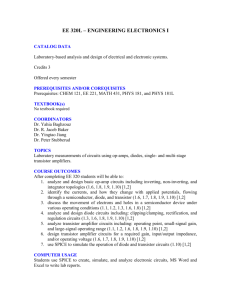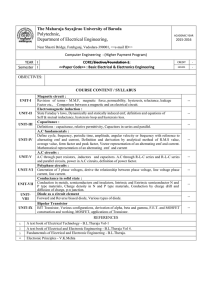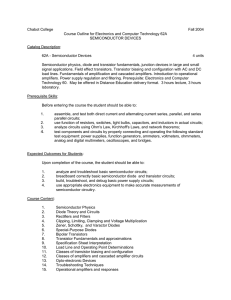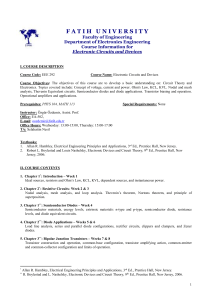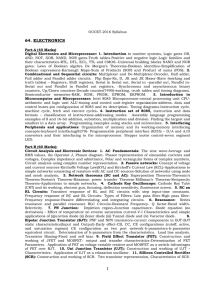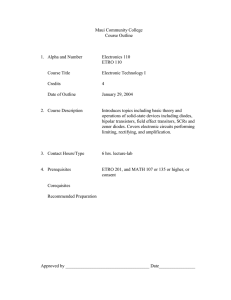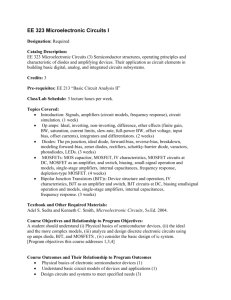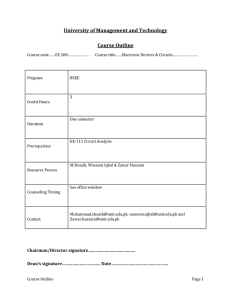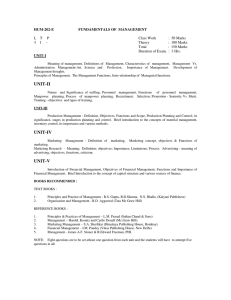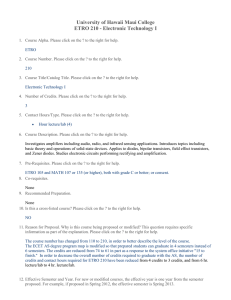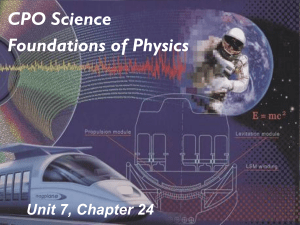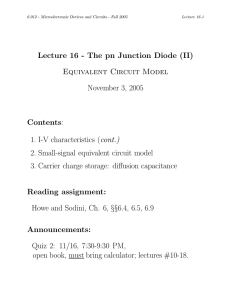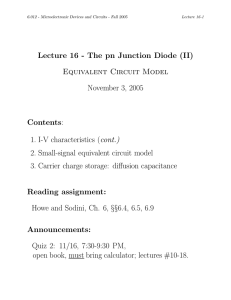EE320 - Introduction to Electronics
advertisement
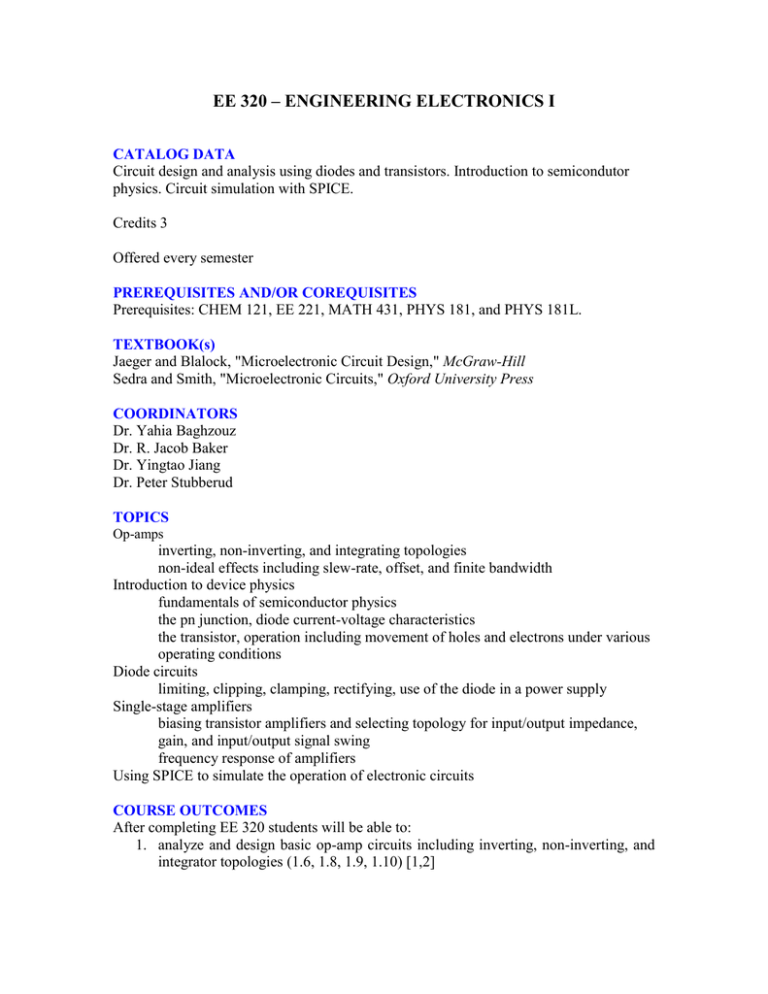
EE 320 – ENGINEERING ELECTRONICS I CATALOG DATA Circuit design and analysis using diodes and transistors. Introduction to semicondutor physics. Circuit simulation with SPICE. Credits 3 Offered every semester PREREQUISITES AND/OR COREQUISITES Prerequisites: CHEM 121, EE 221, MATH 431, PHYS 181, and PHYS 181L. TEXTBOOK(s) Jaeger and Blalock, "Microelectronic Circuit Design," McGraw-Hill Sedra and Smith, "Microelectronic Circuits," Oxford University Press COORDINATORS Dr. Yahia Baghzouz Dr. R. Jacob Baker Dr. Yingtao Jiang Dr. Peter Stubberud TOPICS Op-amps inverting, non-inverting, and integrating topologies non-ideal effects including slew-rate, offset, and finite bandwidth Introduction to device physics fundamentals of semiconductor physics the pn junction, diode current-voltage characteristics the transistor, operation including movement of holes and electrons under various operating conditions Diode circuits limiting, clipping, clamping, rectifying, use of the diode in a power supply Single-stage amplifiers biasing transistor amplifiers and selecting topology for input/output impedance, gain, and input/output signal swing frequency response of amplifiers Using SPICE to simulate the operation of electronic circuits COURSE OUTCOMES After completing EE 320 students will be able to: 1. analyze and design basic op-amp circuits including inverting, non-inverting, and integrator topologies (1.6, 1.8, 1.9, 1.10) [1,2] 2. identify the currents, and how they change with applied potentials, flowing through a semiconductor, diode, and transistor (1.6, 1.7, 1.8, 1.9, 1.10) [1,2] 3. discuss the movement of electrons and holes in a semiconductor device under various operating conditions (1.1, 1.2, 1.3, 1.6, 1.8) [1,2] 4. analyze and design diode circuits including: clipping/clamping, rectification, and regulation circuits (1.3, 1.6, 1.8, 1.9, 1.10) [1,2] 5. analyze transistor amplifier circuits including: operating point, small-signal gain, and large-signal operating range (1.1, 1.2, 1.6, 1.8, 1.9, 1.10) [1,2] 6. design transistor amplifier circuits for a required gain, input/output impedance, and/or operating voltage (1.6, 1.7, 1.8, 1.9, 1.10) [1,2] 7. use SPICE to simulate the operation of diode and transistor circuits (1.10) [1,2] COMPUTER USAGE Students use SPICE to create, simulate, and analyze electronic circuits. GRADING Homework, quizzes, two midterm exams, and a final exam are used for grading assessment. ABET COURSE OUTCOMES 1. The appropriate technical knowledge and skills 1. An ability to apply mathematics through differential and integral calculus, 2. An ability to apply advanced mathematics such as differential equations, linear algebra, complex variables, and discrete mathematics, 3. An ability to apply knowledge of basic sciences, 6. An ability to apply knowledge of engineering, 7. An ability to design a system, component, or process to meet desired needs within realistic constraints, 8. An ability to identify, formulate, and solve engineering problems, 9. An ability to analyze and design complex electrical and electronic devices, 10. An ability to use the techniques, skills, and modern engineering tools necessary for engineering practice, UULO COURSE OUTCOMES 1. Intellectual Breadth and Lifelong Learning 2. Inquiry and Critical Thinking 3. Communication 4. Global/Multicultural Knowledge and Awareness 5. Citizenship and Ethics COURSE PREPARER AND DATE OF PREPARATION R. Jacob Baker, Monday, January 15, 2015
